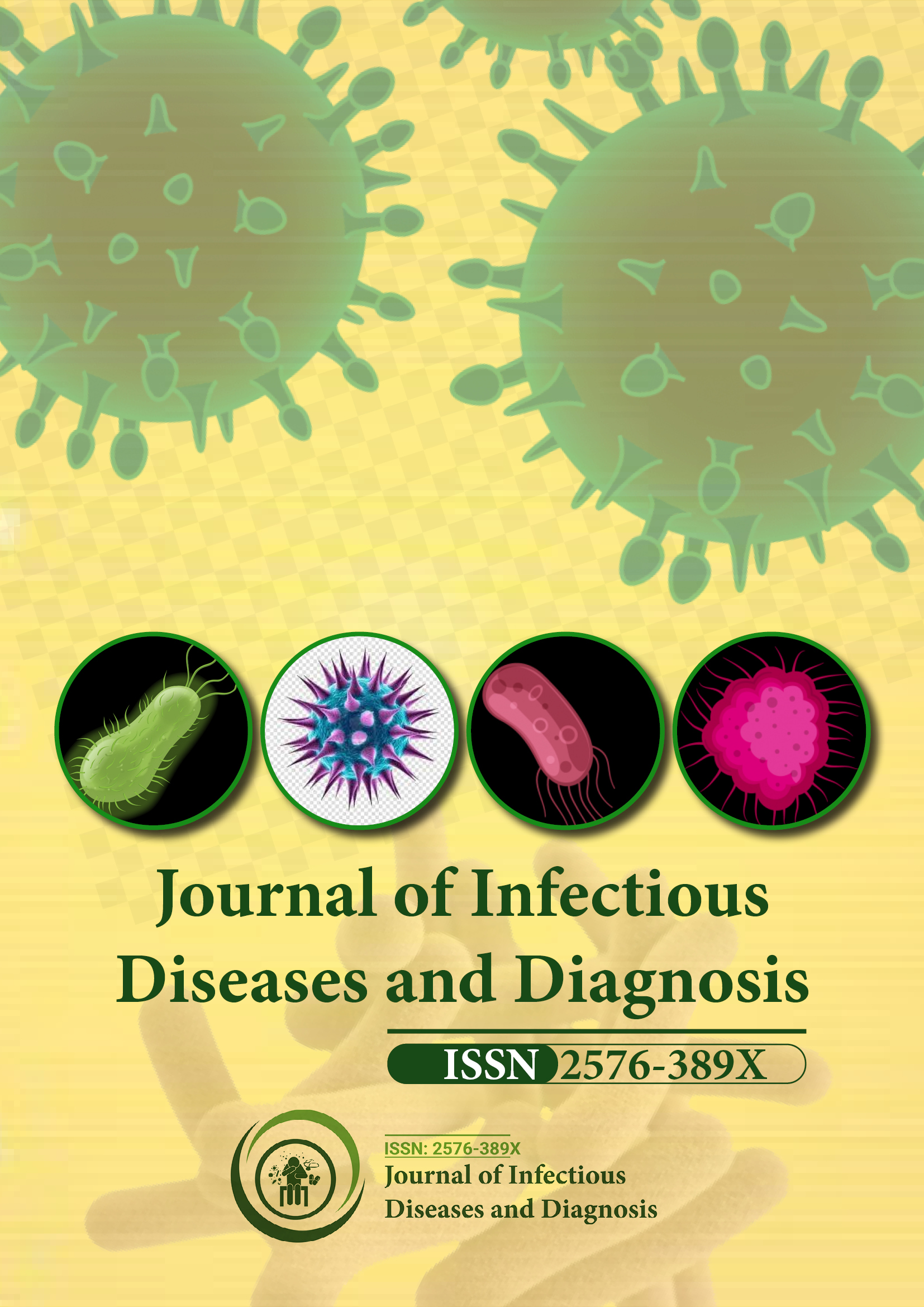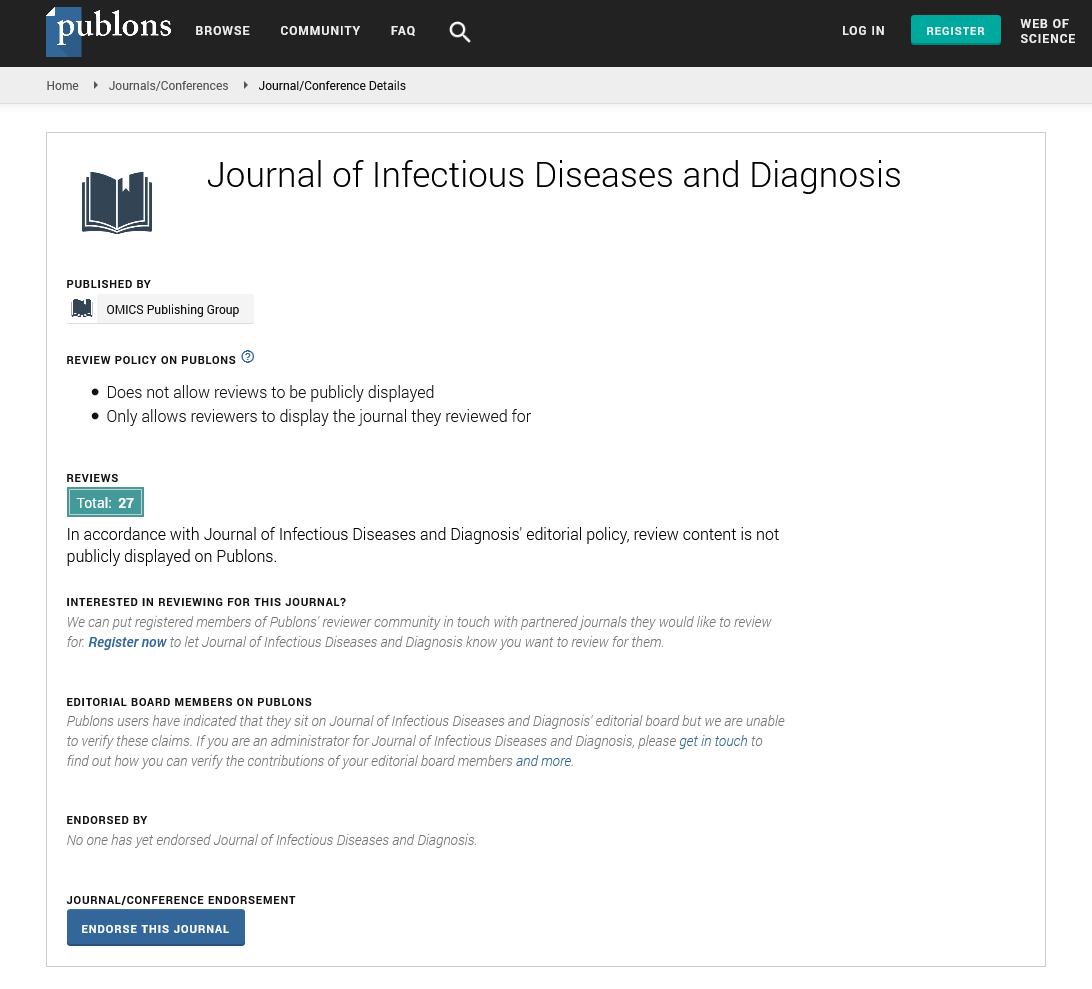Indexed In
- RefSeek
- Hamdard University
- EBSCO A-Z
- Publons
- Euro Pub
- Google Scholar
Useful Links
Share This Page
Journal Flyer

Open Access Journals
- Agri and Aquaculture
- Biochemistry
- Bioinformatics & Systems Biology
- Business & Management
- Chemistry
- Clinical Sciences
- Engineering
- Food & Nutrition
- General Science
- Genetics & Molecular Biology
- Immunology & Microbiology
- Medical Sciences
- Neuroscience & Psychology
- Nursing & Health Care
- Pharmaceutical Sciences
Perspective - (2023) Volume 8, Issue 3
Manipulating the Availability of Virulence Factors Can Have Complex Consequences for Infections
James Harry*Received: 21-Apr-2023, Manuscript No. JIDD-23-16226; Editor assigned: 24-Apr-2023, Pre QC No. JIDD-23-16226(PQ); Reviewed: 09-May-2023, QC No. JIDD-23-16226; Revised: 16-May-2023, Manuscript No. JIDD-23-16226(R); Published: 23-May-2023, DOI: 10.35248/2576-389X.23.8.215
Introduction
Given the rise of bacterial resistance against antibiotics, we urgently need alternative strategies to fight with the infections. Some propose we should disarm rather than kill bacteria, through targeted disruption of their virulence factors. It is assumed that this approach induces weak selection for resistance because it should only minimally impact bacterial fitness, and it is specific, only interfering with the virulence factor in question. Given that pathogenicity emerges from complicated interactions among pathogens, hosts, and their surroundings, such assumptions can be unrealistic. To deal with this trouble in a check case, we performed experiments with the opportunistic human pathogens, where in were manipulated the supply of a virulence component, the iron-scavenging pyoverdine, in the insect host Galleria mellonella. We discovered that pyoverdine availability became now no longer stringently predictive of virulence, and affected bacterial health in non-linear ways. We display that this complexity ought to in part get up due to the fact pyoverdine availability impacts host responses and alters the expression of regulatory connected virulence elements. Our effects monitor that virulence-component manipulation feeds returned on pathogen and host behavior, which in flip impacts virulence. Our findings spot light that understanding powerful and evolutionarily strong anti-virulence treatments will in the end require deeper engagement with the intrinsic complexity of host-pathogen systems.
Description
The pervasive concept of virulence that harms throughout the body with infection that follows greater or much less immediately from pathogens which has exhibits our view of infectious disorder for the reason that early days of germ and has under pinned our scientific quest to remove dangerous microbes. However, advances through the years have discovered that the severity of an infectious disorder relies upon on a good deal greater than simply the sheer quantity of pathogens present or rather; it derives from complicated interactions among the pathogen, its host, and the triumphing abiotic and biotic ecological situations. In different words, a microbes pathogenicity isn't always a lot approximately what it's far and the way ample it's far, however what it does, while it does it, and to whom. These insights have essential outcomes for antibacterial treatments that are looking for to govern as opposed to remove infections. In particular, “anti-virulence” procedures had been visible as promising options to traditional antibiotics. Such treatments are looking for to disarm as opposed to kill pathogens and accomplish that through inhibiting the synthesis or the functioning of virulence elements. The enchantment of this approach is that any outcomes on bacterial health must be pretty minor and consequently such remedies must result in best choice for resistance. However, given the above-cited complexities intrinsic in infectious diseases, we are able to anticipate that during many instances a given antivirulence drug could have outcomes that increase past honestly quenching the centered virulence component. We would possibly have all styles of unanticipated secondary outcomes at the behavior of the pathogen and its host. For example, the suppression of one virulence component ought to pleiotropically have an effect on the law of some other virulence component because of regulatory linkage on the genetic degree. Furthermore, virulence elements regularly function cues for hosts to mount an immune reaction, so interfering with a few virulence elements availability ought to in a roundabout way modulate host responses. In the mild of this inherent complexity, it appears hard to be expecting how a selected antivirulence remedy will in all likelihood have an effect on bacterial load and remedy efficacy. If certainly the remedy reasons secondary outcomes of the type envisaged above, we would want to cautiously revaluate preceding claims at the evolutionary robustness of such treatments. Complex interactions among pathogen and host elements ought to carry into play a large number of various traits, all of which could be ability goals upon which herbal choice ought to act on. Consequently, there ought to nevertheless be sizable choice for pathogen versions which are proof against the remedy and/or grow to be greater virulent. Here, we use the opportunistic human pathogen Pseudomonas aeruginosa as a check case to research the outcomes of manipulating virulence component availability. This bacterium is based on some of virulence elements to set up infections in animals and humans, which includes immune-compromised cystic fibrosis patients. One especially well-studied virulence component is pyoverdine, a siderophore secreted into the neighborhood surroundings to scavenge iron from host tissue. Pyoverdine is a multifunctional molecule. It may be shared among the cells, for iron uptake to stimulate boom and biofilm formation. It is likewise used as a signaling molecule to govern its very own expression, and the synthesis of extra virulence elements, exotoxin A and protease IV. Additionally, it may act as a toxin through interfering with mitochondrial iron homeostasis. For all the one reason, pyoverdine has been recognized as an appropriate goal for anti-virulence treatments. In this study, we manipulated the supply of pyoverdine with inside the context of experimental infections of more wax moth larvae (Galleria mellonella).
Conclusion
We investigated how interference with this virulence component impacts (i) bacterial growth in the host; (ii) the host`s reaction to infections; (iii) the pleiotropic regulatory hyperlinks to different virulence elements; and (iv) how those elements integrate and decide the general degree of virulence the host reports. Building from preceding work, we decreased the in vivo availability of pyoverdine through supplementing bacterial inoculum with gallium, an iron that inactivates pyoverdine molecules through binding irreversibly to them in region of iron. In addition, we additionally explored pathogen and host responses beneath the situations of extended pyoverdine availabilities. This permits us to check greater typically how predictive virulence component availability is for disorder severity.
Citation: Harry J (2023) Manipulating the Availability of Virulence Factors can have Complex Consequences for Infections. J Infect Dis Diagn. 8:215.
Copyright: �??�?�© 2023 Harry J. This is an open-access article distributed under the terms of the Creative Commons Attribution License, which permits unrestricted use, distribution, and reproduction in any medium, provided the original author and source are credited.

